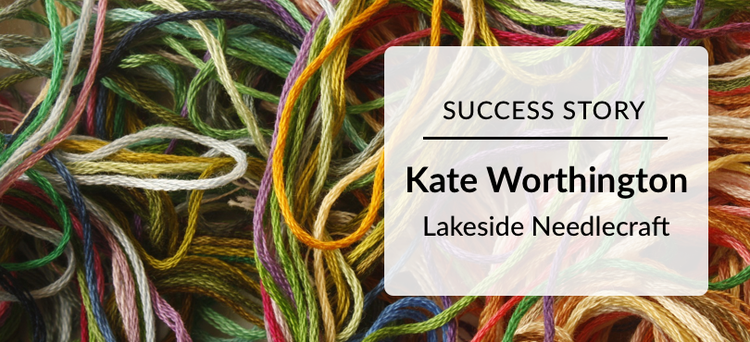Success Stories: Kate Worthington from Lakeside Needlecraft

Kate Worthington started her online business, Lakeside Needlecraft, two and a half years ago and successfully sells a wide range of needlecraft products on her own website and Amazon. Kate shares some of her top tips for new sellers, and how to offer competitive prices without making a loss.
Why did you start selling online?
We started selling online because the cost of having a physical shop was too high. A lot of businesses in the needlecraft market are closing down, so selling online was a good way to continue to offer products which we knew were very popular. We also wanted the flexibility of working from home.
What have been your biggest challenges selling online, and how have you overcome them?
The main challenge has been trying to keep our prices competitive, you find prices can be reduced and reduced to the point where you’re not making any profit. We don’t have many overheads so we’re able to offer low prices already, but we also set a minimum price margin that we’re willing to accept and then use Amazon Repricer.We've also found that when are striving to stay competitive you need to be careful to pick the right items, having a needlecraft background has helped, as well as doing a lot of research to find out what people want to buy.
Why do you use Zenstores?
We were looking for a long time for a way to connect all our different selling channels together. We sell 200-300 items per day and rising, and it was becoming impossible to print off all the orders from one channel and then another. Zenstores has helped us deal with the orders, and saves a lot of time.
What are your top recommendations for people starting out selling online?
1. Know what kind of products you want to sell before you start, and find out everything about them. You're not in a shop where you can get immediate feedback on your products so you need to really know that they're worth stocking and selling. It helps if it's something you like to sell, something you're interested in.
2. Be wary of reducing your prices to keep up with competitors, it's more important to think of profit margins - it devalues the product if you're selling it too cheaply.
3. Use social media - it's been amazing for us. Facebook is very social, and easy to interact with people, I've joined Facebook groups where I can get to know and understand potential customers, and it really helps with promoting the shop. It's been very useful in creating a community, just like a physical shop. I can also be ethere to answer queries at all times of the day and night!
4. Don't buy too much stock. Start with a small amount and build it up. Find suppliers that can stock next day or within two days so you can be flexible with your products and follow demand. It's also important to develop and maintain good relationships with your suppliers.

